Future rates
Future rates are rates found in our database that are associated with contracts that begin in the future or are otherwise valid beyond the current day.
The future period for rates under short-term contracts is limited by ten days, while long-term contracted rates can have a three-month future view.
For a predictive view of possible long-term rates over a longer time period, see Market rate outlook.
New and future contracts
The rates that we show in our platform are based on both current and historical contracts, but there are always new contracts being negotiated and signed by market players.
In some cases, contracts negotiated near the present day may be scheduled to start a few weeks or months into the future, but they are still being signed today and reflect today's market.
In other cases, long-term contracts that extend past the present day also reflect the near-present market as they tend to be more stable compared to short-term contract rates.
Using this future rate period, you can extend your view of the market on Market benchmarks to see both long-term and short-term rates that are valid up to three months and ten days into the future, respectively.
Future rate window
If there is a contracted rate that is valid for one year and began three months ago, it will be considered part of the future period because it extends nine months into the future.
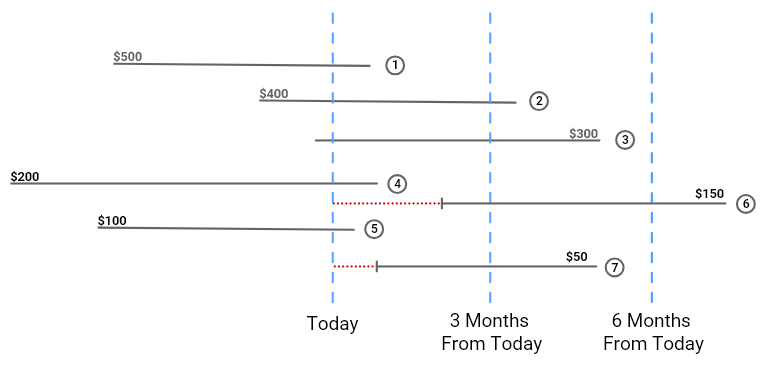
Similarly, if there is a recently signed contract that is set to take effect within a month, then its associated rate would too be a part of the future window, since it extends beyond the current day.
Any rates that we show within this future window will eventually become part of regular historical data. Think of it as a glimpse into the very first contracts currently being signed for the near future.
How to view future rates
To view future rates in Xeneta:
- Go to Market benchmarks and search for your selected origin-destination pair
- Select the +10D or +3M option in the date picker section to view future rates for contracts that extend ten days or three months into the future respectively:
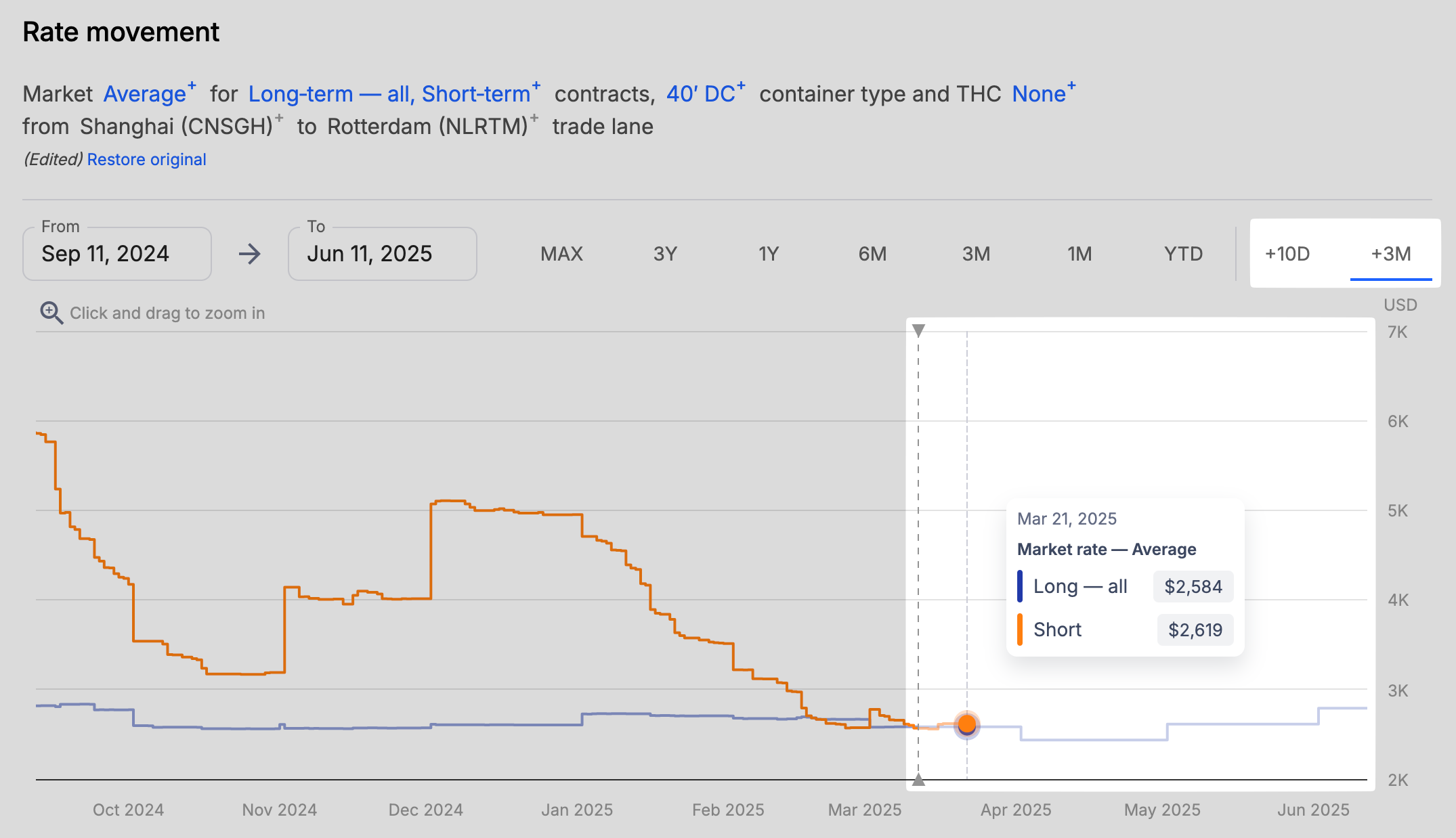
Future rates and contract age
The future rates you see in Market benchmarks will depend on the selected Contract age option that limits the age of the aggregated long-term rates.
In the example case below, we’ll explore a four-month period where three of those months are part of the future window, and take a look at the Shenzhen – Hamburg trade lane using three different Contract age options for long-term contracts:
- All contracts
- Last 6 months
- Last 3 months
All contracts
By including all long-term contracts, we can see that the rates will go down at the start of Q2 2025 before increasing sharply towards the end of the quarter for contracts running beyond the current day:
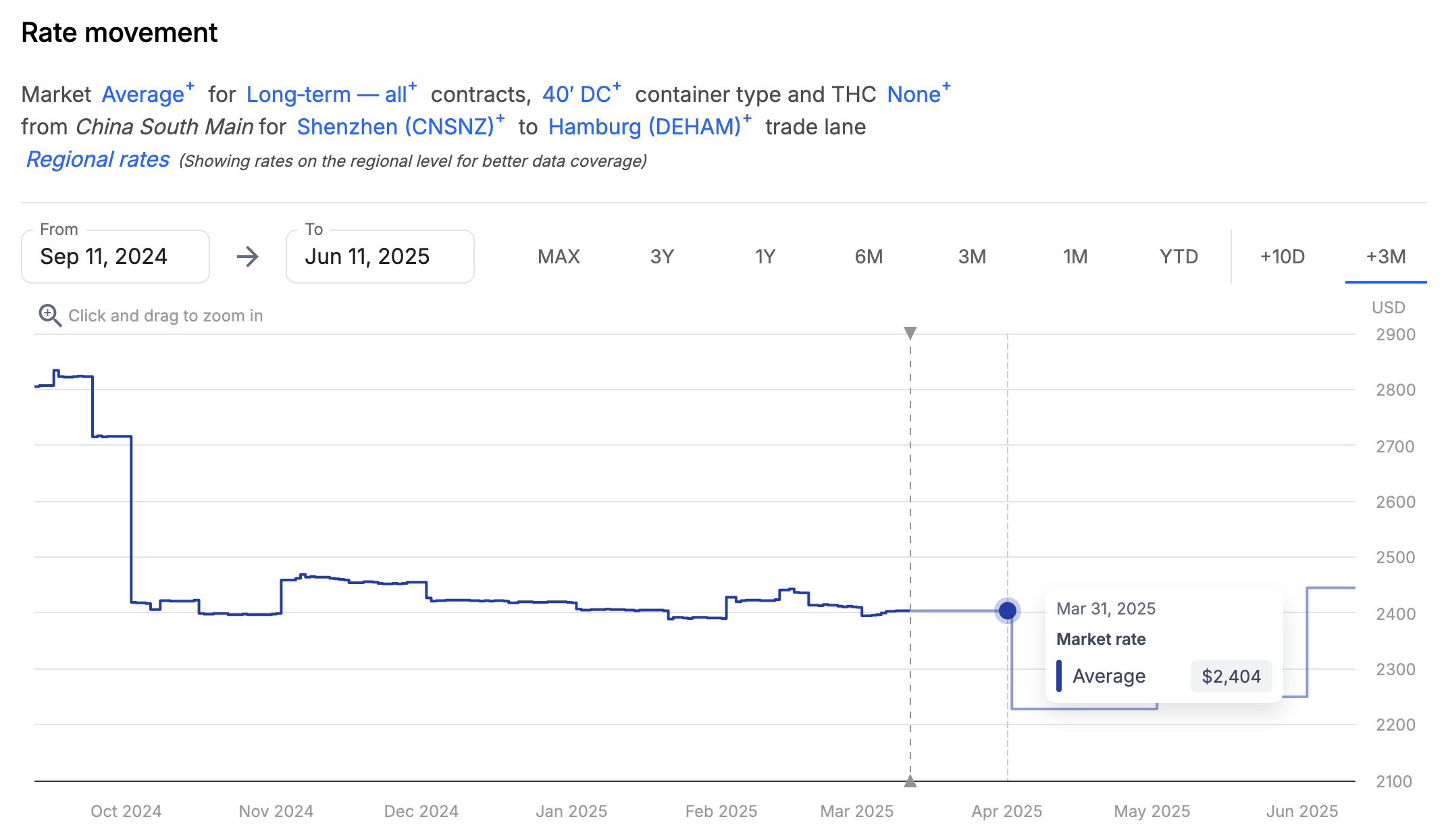
This view does not reveal very much because older long-term contracts tend to outnumber newer freshly-signed contracts.
Last 6 months
If we choose to exclude all long-term contracts older than six months, we get the following view of the market:
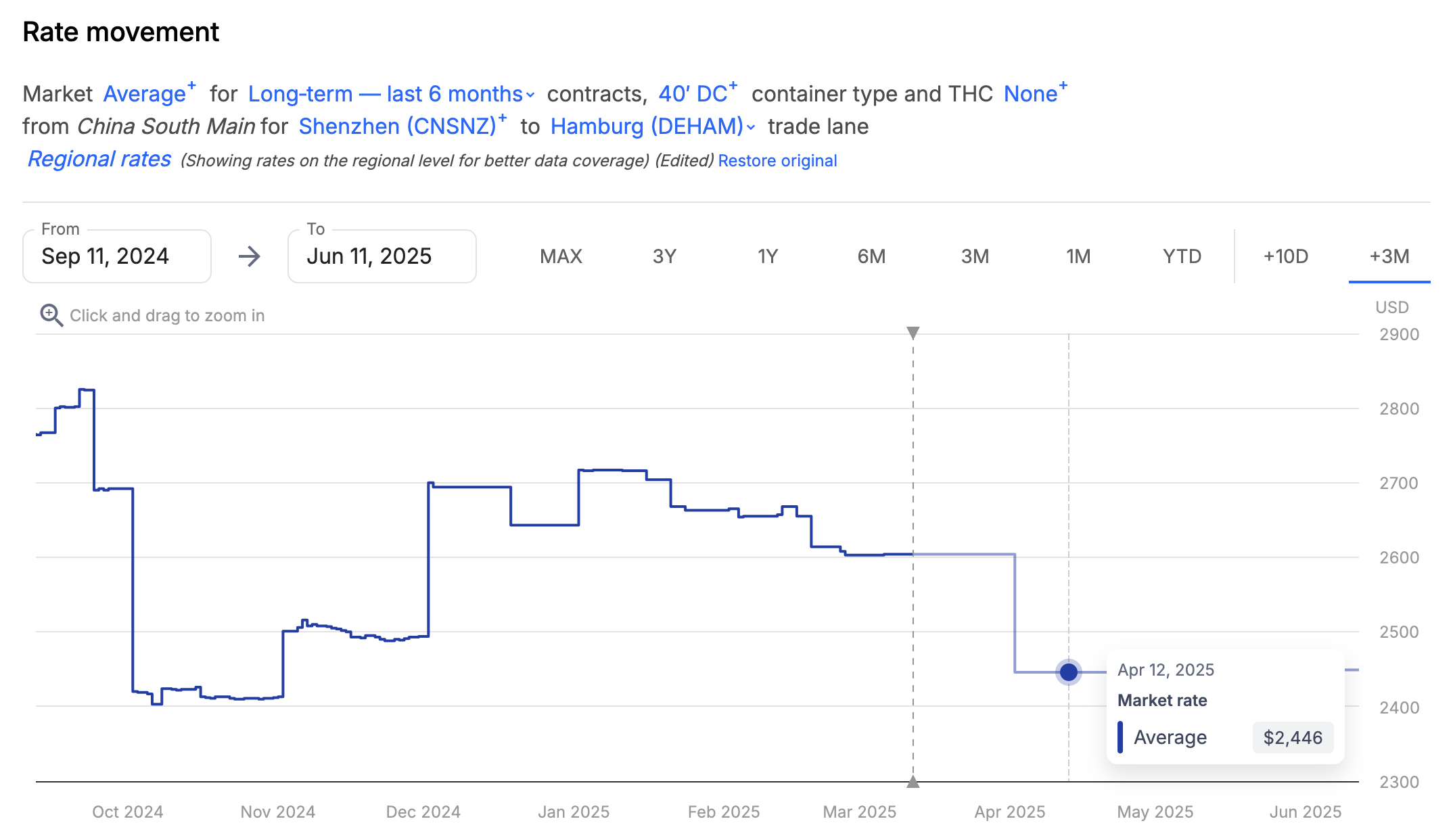
We see that the average market rate will experience a sharp decrease in the beginning of Q2 2025, and will remain around the same level all the way through the end of the quarter.
Last 3 months
Finally, by looking only at the contracts that were signed within the last three months, we get the "freshest" view of the ocean freight market:
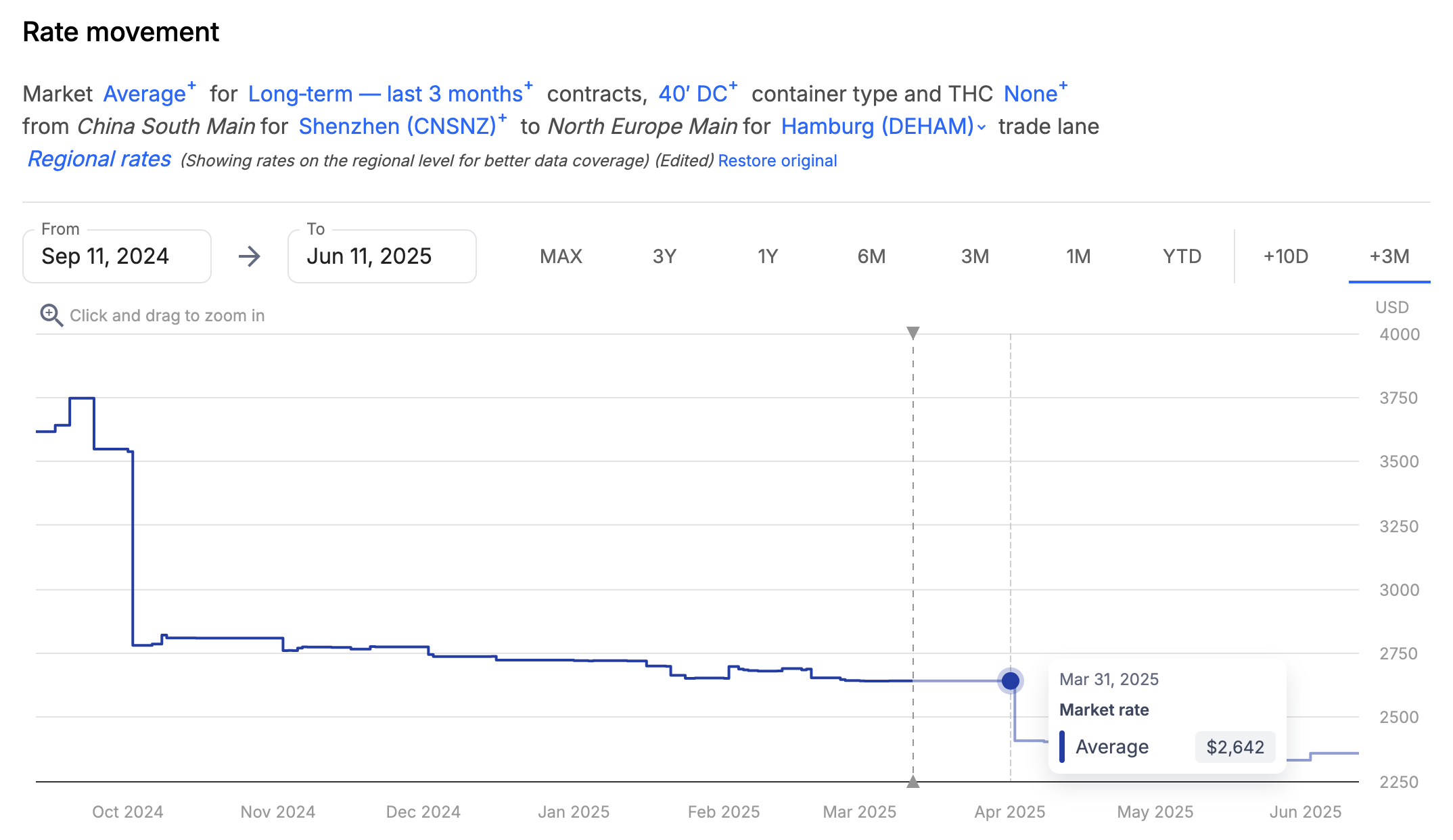
This view also seems to confirm that the rates for the newest contracts on the market will drop around 10% in April, and will continue to decrease incrementally until the end of June.
The conclusion we can draw in this particular example is that market players entering contracts around present day seem to be paying lower rates for shipments scheduled for the coming months.
Updated about 2 months ago